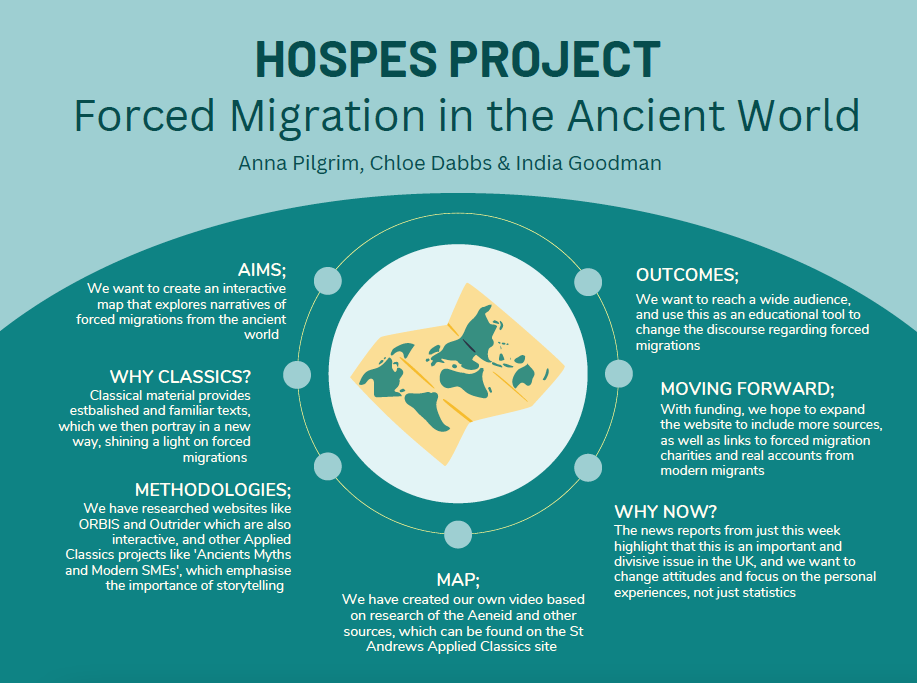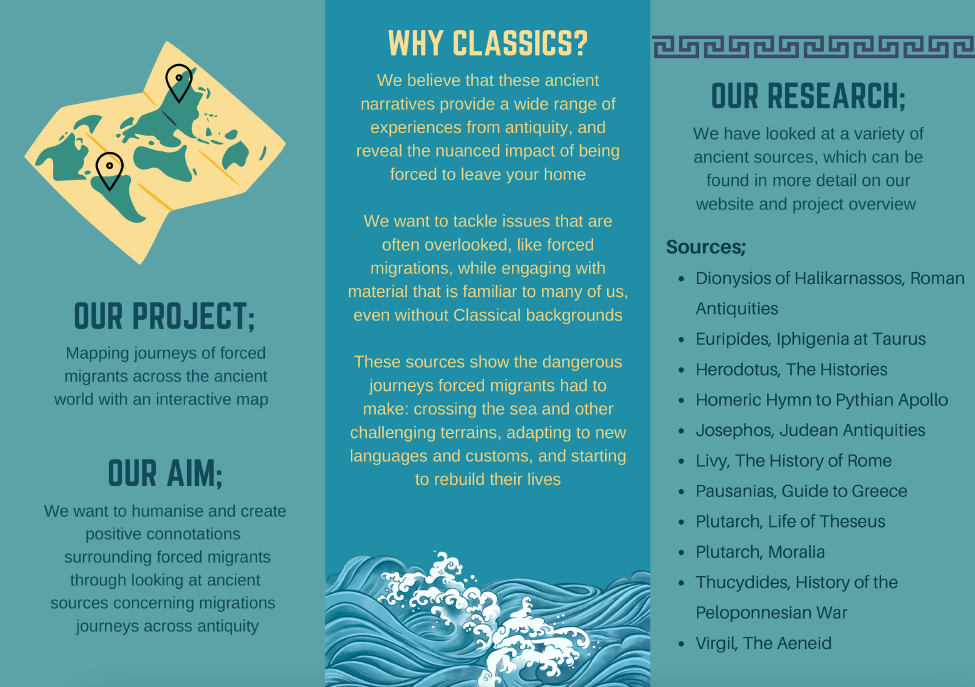In 2022, a group of three University of St Andrews students, Chloe Dabbs, India Goodman and Anna Pilgrim, developed The Hospes Project as part of their work on Applied Classics. The project uses the power of storytelling and the ‘draw’ of Classical antiquity to raise awareness about modern migration experiences and to address toxic rhetoric and anti-immigrant sentiments in the UK and beyond.

You can explore the project in full on the website we have created. As Anna, Chloe and India explain there:
As part of our Applied Classics course, we have been trying to map ancient forced migration journeys across antiquity. We want to create an interactive map that allows our users to engage with literary and material evidence from the ancient world through a visual journey, showing the dangers that ancient migrants faced when travelling across the Mediterranean… Through combining ancient sources with our own carefully crafted narratives, we hope that these tales capture your interest and encourage you to reflect on forced migration journeys, ancient and modern.
https://ancientworldforcedmigration.wordpress.com
Our project recognises and aims to exploit the ‘caché’ of Classics in the modern world, by drawing people into discussions about modern migration experiences via stories from antiquity. Our research has fallen into three parts: we have researched ancient experiences of migration, which have fed into the fictional stories which we have crafted for our storytelling; we have researched modern experiences of migration, including conducting interviews with people who have lived experience of forced displacement, to ensure that our storytelling is informed by real life and reflects what real people want us to know; and we have researched storytelling methodologies and tools, which have helped us to design our interactive map.

Our interactive map not only allows the user to plot a forced migration journey across the ancient Mediterranean, but it also encourages them to think about the struggles faced by migrants in any era, from language barriers to acquiring different types of transport, engaging with these ancient narratives in a new and more personal way. We have only developed a prototype so far (please forgive its rough edges!). With more funding, we hope to refine it further, so that it can incorporate a wide range of start and end points and provide users with a set of immersive experiences that move them between ancient and modern migration stories.
The idea behind the map is that it is a visual tool that illuminates certain problems that may not be as clear or focused in ancient texts and archaeological sources. Our overarching aim is to help users to visualise the arduous and often terrifying routes people were forced to take when fleeing war, natural disasters and other situations – in antiquity and more recently. We want to take familiar tales and texts, such as Virgil’s epic poem The Aeneid, but present them in a new and interactive form, and in dialogue with modern voices. We have experimented with an easy-to-use software programme which allows the user to input various locations and choose which narratives they want to explore. You can get a flavour of how our interactive map will work in the video below:
One of the benefits of studying the ancient world is that the stories and events from the deep past are not exclusive to it; we see echoes of them in our own time. We have tried to bring this out by interweaving ancient tales of migration with modern voices, such as the voice of Malala, recounting her forced displacement. By bringing a mix of ancient and modern stories to life through digital technology and a virtual form of immersive journeying, we hope to encourage a sense of connection and empathy with forced migrants from all eras. This humanisation through storytelling is a vital part of visualising forced migration as an experience lived by countless ordinary people throughout the history of our planet.
You can find our more about our project by looking through our brochure and ppt slides below: